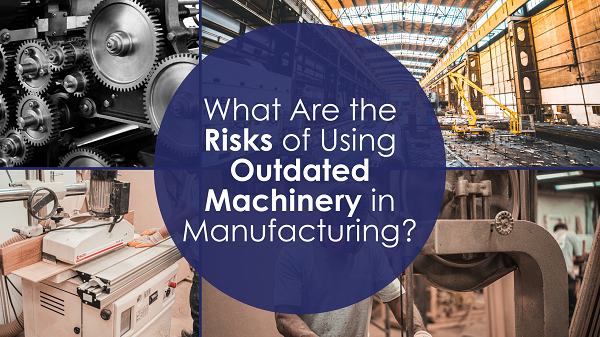What Are the Risks of Using Outdated Machinery in Manufacturing?

During a recent visit to the Bradford Industrial Museum, I was struck by the sight of old machinery that once powered the industrial revolution.
This nostalgic experience reminded me of a pressing issue in modern manufacturing: the risks associated with using outdated machinery.
As we walked through the museum, the obsolete equipment served as a stark reminder of how far technology has come and the potential pitfalls of clinging to the past in a rapidly advancing industry.
Risks of Unplanned Downtime
One of the most significant risks of using outdated machinery is unplanned downtime. As machines age, they become more susceptible to breakdowns, which can halt production and lead to substantial financial losses. A study highlighted those manufacturers can face up to 800 hours of downtime annually due to outdated equipment. This not only affects the bottom line but also disrupts the entire production schedule, impacting customer delivery and satisfaction.
Other blogs you may be interested in:
- How can Legacy Equipment Make your Manufacturing Facility Vulnerable to Cyber Attacks?
- Why is Operational Resilience Crucial for Manufacturers During Global Instability
Challenges with Spare Parts and Maintenance
Outdated machinery often presents challenges in sourcing spare parts, which may no longer be readily available or are expensive to procure. This scarcity can lead to prolonged downtime as manufacturers scramble to find replacements. Additionally, the maintenance of such equipment becomes increasingly costly and complex, often requiring specialised knowledge that is hard to find as experts familiar with the old technology retire or move on. This situation can lead to increased operational costs and inefficiencies.
Other blogs you may be interested in:
- Understanding Cyber Physical Security – Essential Insights for Manufacturing Leaders
- Managing Security Risks in Manufacturing During Times of Global Instability
Cybersecurity Vulnerabilities
In an increasingly digital world, even manufacturing equipment is not immune to cyber threats. Outdated machinery often runs on legacy software systems that are no longer supported or updated by their original manufacturers. This leaves them vulnerable to cyberattacks, which could lead to data breaches, production disruptions, or even sabotage. Modern manufacturing systems are designed with cybersecurity in mind, featuring encrypted communications, regular security updates, and integration with broader IT security infrastructures. By continuing to use outdated machinery, manufacturers expose themselves to significant cyber risks that could have far-reaching consequences.
Other blogs you may be interested in:
- Securing your Business with Legacy Equipment: Why Choose our Expertise?
- Making the Right Choice: Why Core Values Matter in your Security Partner
- Recovering from Criminal Activity: Why Choose our Security Solutions
Productivity and Quality Setbacks
In today’s competitive manufacturing landscape, efficiency and product quality are key differentiators. Outdated machinery can significantly hamper both these aspects. Older equipment typically operates at slower speeds and with less precision than its modern counterparts, leading to reduced output and potentially compromised product quality. This not only affects your bottom line but can also damage your reputation with customers who expect consistent, high-quality products delivered on time.
Conclusion: Embracing Modernization for a Secure Future
While the charm of vintage machinery is undeniable, the risks associated with using outdated equipment in manufacturing are significant. From unplanned downtime and maintenance challenges to cyber security vulnerabilities, the drawbacks can outweigh the perceived cost savings of delaying upgrades. As manufacturers, it is crucial to assess the state of your machinery and consider strategic upgrades to ensure efficiency, safety, and competitiveness in today’s fast-paced industrial landscape.
This content has been generated with the assistance of artificial intelligence (AI). While AI technology was used to draft and develop the initial content, it has been thoroughly reviewed, edited, and fact checked by Luke to ensure accuracy and relevance. We strive to provide high-quality and trustworthy information, but please be aware that AI-generated content may contain errors or omissions. We take full responsibility for the final content presented here and are committed to maintaining transparency and integrity in our use of AI technology.





